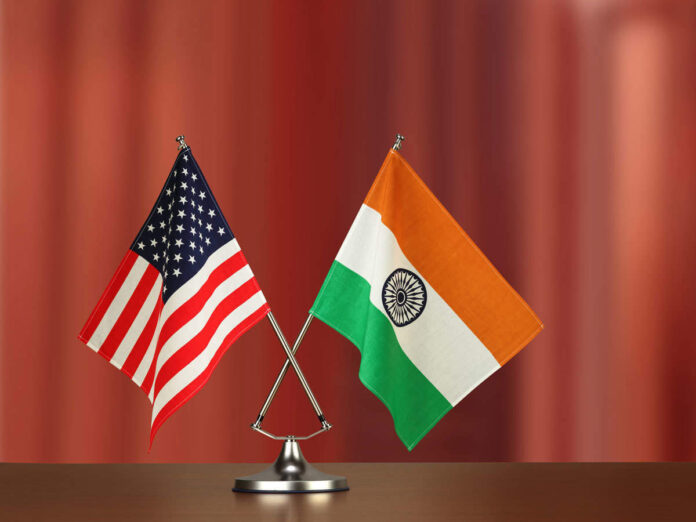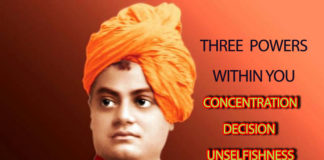It is widely accepted that India and the United States have transformed their relationship in the post Cold War era. In the years from the Clinton administration, both US and India found increasing congruence in the security, economic and politics of the new world. Their strategic partnership grew substantially and with the signing of the nuclear deal in 2008, the level of engagement grew rapidly despite constraints. The two were set to synchronize their national, bilateral, regional and global goals as they faced fresh threats (traditional and non -traditional) from a rising China which has also led them to be steadfast partners in the Indo Pacific region. Significant milestones were crossed in defence cooperation with India signing foundational agreements that allowed greater convergence in co-production to interoperability amongst others, and the US calling India its major defence partner (2017), despite the Russia factor.
By K P Vijayalakshmi
A feature that pushed this dynamic positive trajectory further was the continued bipartisan support within both countries. Intrusion of the assertive behaviour of China under President Xi in various arenas (East and South China Sea) drew sharp reactions from both propelling an Asian Pivot by the US and an American Oceanic (maritime) weave by India. Then came January 2020 and the deadly beginning of a global pandemic that has since transcended all security and other geopolitical calculus of countries around the world. U.S. and India began navigating unchartered waters that demanded quick, real time global action and calibration to meet the evolving Covid -19 virus first reported from Wuhan in China.
The pandemic has taken many lives and infected millions around the world, and each succeeding wave raised more difficulties for the countries combating them. India and the US, among the worst hit with highest rates of infections and deaths drew on their multi level partnership to meet these challenges. Of them, the S &T collaboration in vaccines merits scrutiny.
Indo-US Scientific Collaboration
The Indo-US Vaccine Action Programme (VAP) has its origins in the early 1980s when Prime Minister Indira Gandhi and President Ronald Reagan initiated scientific research relating to vaccination development – including laboratory-based research, evaluation of candidate vaccines, testing for clinical development, vaccine quality control, and delivery of vaccines. A Government-to-Government MOU officially established it in July 1987 under the “Gandhi-Reagan Science and Technology Agreement”. Since then, the agreement has been renewed every five years.
The programme was a collaboration of health sciences between the US National Health Institutes, the Indian Department of Biotechnology (DBT) and Indian Council of Medical Research (ICMR) along with other partners. According to the Department of Biotechnology under GOI, all work was carried out within areas categorized as VAP priorities by the VAP Joint Working Group (JWG) composed of eminent scientists and policy-makers from both countries. A hallmark of the programme has been to shift away from the “donor-recipient” model and adopt a genuine partnership in which both governments “fund activities of mutual interest for their individuals and global benefit.” In India, the Prime Minister appointed an Apex Committee that has the power to approve and review activities. Furthermore, the nodal agency authority given to the Indian DBT through the VAP MOU has “given this programme an extraordinarily workable administrative system through which decisions can be made rapidly.” This mechanism had in fact been part of the partnership in the global health security agenda of both countries. The unfolding Indo-US cooperation in tackling the Covid pandemic thus should also include this context.
Covid-19 Diplomacy between India and the US
“Covid-19 diplomacy” is a new development in international relations given the pervasive impact of the virus on the world. As the global political economy was brought to its knees by the Covid-19 pandemic in March 2020, international relations underwent a paradigm shift. At the time, the Trump Administration was facing its final year ridden with domestic issues, fuelled further by the pandemic. Even as nations were in the early stages of dealing with the crisis on their own turf, diplomatic engagements continued. India and U.S. witnessed further deepening of partnership despite an elusive bilateral trade deal, especially in the Indo Pacific and on tackling the virus.
Developments in that year had certainly contributed to the faith in working of the partnership, especially in the context of laying out the modes of cooperation in the context of managing the Corona pandemic. For instance, the issue of Indian supply of hydroxychloroquine to the US and the issuing of American Ventilators lent credence to the working of the partnership. As assured by the US Embassy’s Health and Human Services (HHS) attaché Preetha Rajaraman in May 2020, India and the US were, and would be, working on key research technology for the development and testing of life-saving and cost-effective vaccines for a range of infectious diseases. “In the context of the current pandemic, partners under the Vaccine Action Programme (VAP) are planning to collaborate on the development and testing of vaccine candidates and diagnostics for COVID-19,” she added. American focus on India was not only on the Indo pacific cooperation but real time coordination on the pandemic. Further, in September 2020, the US government announced that “Gilead, the U.S. inventor of remdesivir, which is used to treat COVID-19, had granted licenses to several Indian companies to produce a generic version of the drug for 127 low- and middle-income countries.” By December 2020, Department of State stated that “The COVID-19 pandemic has highlighted the risks of overreliance on single suppliers of goods critical to national security,” in a fact sheet on the importance of supply chains. “To protect our businesses and overall prosperity, we must diversify global supply chains,” it stated.
Thus, “Since the beginning of 2020, the U.S. Agency for International Development (USAID) has provided $13.1 million and 200 state-of-the-art ventilators to India as part of the United States’ more than $900 million in global humanitarian assistance” to fight the coronavirus worldwide. USAID and agencies of the US Department of Health and Human Services, including the Centres for Disease Control, the National Institutes of Health and the Food and Drug Administration, are working with the government of India “to train health workers, support local communities [and] strengthen clinical capabilities for better testing, surveillance and treatment.”
Steady Indo-US partnership, regardless of ideological or party leanings, has been partly ascribed to the bipartisan consensus. Yet, nuances of individual leadership and partisan mooring have consistently been compared throughout government transitions. As Biden administration transitioned, uncomfortable issues with the India on human rights (unlike the Trump years) were expected. Nonetheless, China factor continued to unite America and India, especially due to Biden’s policy emphasis of China as US’ strongest competitor and threat, developments in UN forums on Kashmir, the Galwan Valley on the India China border, issues in the Indo Pacific, and the Covid situation amongst many others. Thus, given their national and strategic interests and well-established defence cooperation, along with added considerations for the long term management of the Covid pandemic, climate change, infrastructure, collaboration in technologies and multilateral forums, the model of cooperative trusted partnership was expected to continue. Biden laid diplomatic and political emphasis on the Indo US partnership on many levels and by March had publicly articulated Indian abilities and place in Indo-Pacific order. In particular, focussed as he was on tackling the Covid pandemic in the US, India was seen as an answer to the China threat in all spheres including diversifying the supply chains through initiatives. India was going to become the manufacturing hub of many sectors including the vaccine production. Thus, Biden administration’s slow response to the crisis in India as the harsh surge of the second wave of the Corona virus hit it in April 2021 was unexpected giving rise to the concern of fragility in the relationship.
Perceptions and approach
Understanding the Biden Administration’s initial approach to India’s Covid-19 second wave has ranged from accepting America’s domestic pressures in its own tackling of Covid and its consequent urges for isolationism, to the debates critiquing perceived “blunders” and “missteps” at failing in its obligations to assist its allies and partners abroad. As India entered a severe second-wave in April 2021 with active cases and death tolls rising, perceptions rose that the Global Comprehensive partnership that was recently showcased at the Quadrilateral Security Dialogue (QUAD) march meeting with India as major player in vaccine production collided negatively with a repetition of “America First” policy. As the Indian medical infrastructure strained under this brutal wave, scientific community portended the onslaught of a third wave in the future. Thus, India needed to understand and shape Biden Administration’s thinking on US’s role in combating the pandemic both for reasons of bilateral and for long term planning of pandemic threats. Indian minister for Foreign Affairs recent US visit must be seen in this context.
In fact, several international partners and observers argue that India’s needs must be met so as to ensure its ability to continue as a crucial manufacturer and supplier of essential commodities like pharmaceuticals and vaccinations. For example, Australia has referred to India as a key partner in the Quad in vaccine production. Similarly, the US has acknowledged India’s strategic importance to it. “The United States move to waive IP protection for Covid-19 vaccines, its willingness to negotiate at the WTO, and its delivery of raw materials required for India to make millions of vaccine doses showed that shoring up India’s domestic manufacturing capacity is a key motivation for external assistance.”
Criticisms of India’s policy of “Vaccine Maitri” notwithstanding, India’s decision to export 66.3 million vaccines in bilateral aid, contracts, and WHO-led COVAX has been lauded as India’s mindfulness in fulfilling its role as a reliable and responsible global citizen with substantial benefits to offer. One can attribute the incoming, and by some standards overwhelming international response as also due to India’s foresight in establishing effective international diplomacy.
Understanding Biden’s Pandemic Response
The response to the Covid second wave in India by the Biden administration was shaped by the thinking of key elements of his Covid management team that wanted to attain herd immunity in America through an aggressive comprehensive domestic vaccination programme. The first step was to reenact the Defence Production Act (DPA) of 1950 (that was invoked by President Trump in March 2020). This was deemed essential as Title III of the DPA (Expansion of Productive Capacity and Supply) “allowed the executive to provide financial incentives—such as loans, loan guarantees, direct purchases and purchase commitments—to incentivize domestic manufacturers and to ensure that the federal government has the capacity to produce critical items”. Trump administration had invoked various sections of the DPA to expand coronavirus testing capacity. Documents show that his administration invoked the authorities of the act 18 times to counter the pandemic.
Two executive orders ( 13987 and 14001) issued during President Biden’s first week in office continued this policy which “were designed to systematize the federal government’s management and coordination of the coronavirus pandemic recovery efforts—to include reevaluating existing supply levels in theStrategic National Stockpile—and to establish the organizing framework under which the DPA would be used”. These steps were in line with Biden’s campaign promiseto leverage the authorities under the DPA to support a goal of administering 100 million coronavirus vaccines within the first 100 days of his presidency. Both Pfizer and Moderna stated on Feb. 23 that they expected to increase vaccine production by the spring. Pfizer Chief Executive Officer Albert Bourla noted that the DPA has “significantly aided” his company’s efforts to secure raw materials and equipment necessary to expand production of the vaccine. As part of the strategy, the Biden administration also “directed an inventory review of critical materials; treatments; and supplies, personal protective equipment and resources necessary to effectively produce and distribute tests and vaccines at scale. This part of the order also directed an evaluation of whether private industry could reasonably be expected to provide such supplies in a timely manner”.
Thus, though Biden sought to reverse many of Trump’s policies, the US’s commitment to prioritizing its own vaccine procurement remained unchanged. He not only continued Trump’s policy of restrictions on export of critical materials for vaccine production, but also articulated the ‘America First’ doctrine in the context of the need to vaccinate all Americans corresponding to the amount of vaccine doses it had. Department of State spokesperson Ned Price stated that it was in the interest of the US and indeed the world to see all Americans vaccinated. Reactions in India and even in the US pointed out that the US would be perceived as an unreliable partner and leader. The restrictions on the export of raw materials required for vaccine production via DPA was strongly criticised in India as Adar Poonawalla, CEO of the Serum Institute of India (SII) tweeted publicly for American help. Additionally, the administration’s insistence on its domestic agenda in spite of continual contact with Indian officials on the unfolding seriousness of the crisis hardened perceptions and abashed expectations.
The speed with which covid-19 infections spread and wreak devastation has been a constant reminder that timely action is the key to combating the crisis. Therefore, critical perceptions of slow or delayed response in assistance and aid impacted Biden’s internationalist foreign-policy team and domestic scientific experts like Dr. Fauci, already supportive of India. This led to a flurry of announcements by key officials like the National Security Advisor Jake Sullivan, who announced the easing of restrictions to send raw materials for vaccine production. As of June 5th, the US government has announced easing some restrictions on the AstraZeneca, Sanofi and Novavax providing a much needed relief to SII of India. Gayle E. Smith, State Department Coordinator for Global Covid Response and Health Security highlighted that India is a “major priority” for the US, and sent Covid emergency aid to the tune of $100 million. The private sector pumped in 400 million more. President Biden, along with Vice President Kamala Harris, Secretary of Defense Lloyd Austin, and USAID Administrator Samantha Power emphatically acknowledged that India had been a dependable partner during their time of need.
By April 28 the US Chamber of Commerce hosted Secretary of State Blinken and Deputy Assistant to the President and Coordinator for Indo-Pacific Affairs Kurt Campbell, and announced that, they along with USIBC and CEOs of over 40 companies will set up a Global Task Force on Pandemic Response: Mobilising for India to help India tackle the deadly second wave of the Corona virus. Details of critical medical supplies reaching India were reported in the media illustrating a partnership resilience that had allowed a course correction that brought back the two countries from a crisis. Many CEOS of Indian origin were also involved due to personal connect with India providing future opportunities to collaborate.
This article first appeared in www.vifindia.org and it belongs to them.








